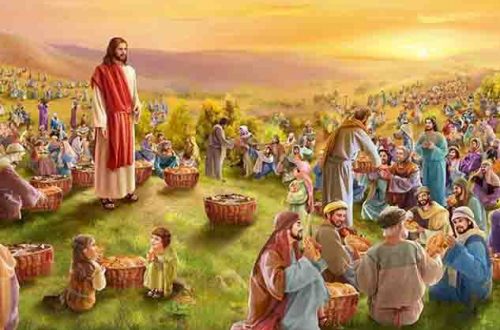
Wine
A libation is a drink offering, usually of wine, poured out upon an altar as part of a sacrificial ceremony.
Wine Libations

A libation is a drink offering, usually of wine, poured out upon an altar as part of a sacrificial ceremony. (XXI) Drink offerings were poured out on the Bronze Altar; however, drink offerings were prohibited from being poured out on the Golden Altar of Incense. (Exodus 30:9)
Drink offerings poured out on the Bronze Altar always consisted of wine. There was no substitute as it represented the fruit of the earth or a product of a person’s labor. The drink offering recognized God as Creator and Lord over all the earth. It was quantified in the Mosaic Law of sacrifices (Exodus 29:38-41. Leviticus 23:13. Numbers 15:3-10). (XII)
Levitical Requirements for Sacrifices and Offerings including the Drink Offering

After the sacrifice had been made in the Levitical law, then, as an extra offering, this libation, this drink, would be taken and poured upon the sacrifice. And when it was poured upon the sacrifice, the heat there in the altar and the flames would consume it and vaporize it, and it would be gone forever, never to be retrieved, never to be brought back. It would go into the presence of God. (XXII)
The drink offering typologically represents our complete dedication: a life poured out to the Lord Jesus Christ.
The Apostle Paul said it this way:
But even if I am being poured out like a drink offering on the sacrifice and service of your faith, I am glad and rejoice together with all of you. And in the same way you also should be glad and rejoice together with me. (Philippians 2:17,18 NET)
What Paul was saying is, I give my life upon the sacrifice of Jesus Christ. I pour it out, no holds barred, never hope to get it back, and no strings attached (1). (XXII)
Jesus said it this way:
For whoever wants to save his life will lose it, but whoever loses his life for my sake and for the gospel will save it. (Mark 8:35 NET)
It has been said, “Finders keepers; losers weepers.” But Jesus says, “Losers finders, keepers weepers.” “Whosoever shall lose his life for my sake and the gospel’s, the same shall [find] it.” (XXII)
Binding his foal to the vine and his donkey’s colt to the choice vine, he has washed his garments in wine and his vesture in the blood of grapes. (Genesis 49:11 NET)
On a deeper level, wine also represents blood (1), the essence of human life. Pouring wine upon the altar in sacrifice to God depicted a person’s total dedication—spirit, soul, and body. (XII)
for the life of every living thing is in the blood. So I myself have assigned it to you on the altar to make atonement for your lives, for the blood makes atonement by means of the life. (Leviticus 17:11 NET)
Indeed according to the law almost everything was purified with blood, and without the shedding of blood there is no forgiveness. (Hebrews 9:22 NET)
The blood of Jesus is conceptualized as wine poured out from a container. (XI)
And in the same way he took the cup after they had eaten, saying, “This cup that is poured out for you is the new covenant in my blood. (Luke 22:20 NET)
He said to them, “This is my blood, the blood of the covenant, that is poured out for many. (Mark 14:24 NET)
for this is my blood, the blood of the covenant, that is poured out for many for the forgiveness of sins. (Matthew 26:28 NET)
Later Paul would say:
For I am already being poured out as a drink offering, and the time of my departure has come. (2 Timothy 4:6 ESV)
Paul knew that atonement for his sins had been achieved through the blood of Jesus Christ (1). But as he languished in prison, perhaps he reflected on the meaning of his approaching death. He knew that his death was a freewill offering to God, an oblation of his life upon the altar. He sacrificed himself in the service of Christ, recognizing Him as sovereign over all creation. As a drink offering, Paul poured out the fruit of his labors and the essence of his life. (XII)
Feasts, Festivals, and Important Occasions of the Biblical Covenants Series:
- The Feasts of Israel – Introduction
- The Feasts of Israel – Hebrew Calendars, New Moon, Sabbath Year, and the Jubilee Year
- The Feasts of Israel – Sabbath
– The Spring Festivals:
- The Feasts of Israel – Passover
- The Feasts of Israel – Unleavened Bread
- The Feasts of Israel – Firstfruits
- The Feasts of Israel – Weeks (Pentecost)
– Seven Church Conditions during the Church Age:
- Prologue
- Jesus the Messiah!
- The Legalistic Congregation (Ephesus)
- The Persecuted and Faithful Congregation (Smyrna)
- The Persecuted and Compromised Congregation (Pergamos)
- The Licentious Congregation (Thyatira)
- The Dying Congregation (Sardis)
- The “Canceled” and Faithful Congregation (Philadelphia)
- The Dead Congregation (Laodicea)
– The Fall Festivals:
- The Feasts of Israel – Trumpets
- The Feasts of Israel – The Day of Atonement(s)
- The Feasts of Israel – Booths (Tabernacles)
- The Feasts of Israel – Dedication (Hanukkah)
Biblical Typologies, Metaphors, & Similes Series:
- The Old Leaven of the Kingdom of Darkness
- The New Leaven of the Kingdom of Heaven
- Wine
- Water
- Finely Sifted (Wheat) Flour
- Frankincense
- Myrrh
- Anointing Oil
- Olive Oil
- Honey
- Salt
- Waving and Heaving
- Barley
- Gold
- Silver
- Bronze
- Stone
- Wood
- Linen
- Iron
- Shofar and Trumpet
Shalom
(Security, Wholeness, Success)
Peace
Then he said to them, “Therefore every expert in the law who has been trained for the kingdom of heaven is like the owner of a house who brings out of his treasure what is new and old.” (Matthew 13:52 NET)
(1) Select the link to open another article with additional information in a new tab.
(I) Neusner, J. (1988). The Mishnah : A new translation (p. 742). New Haven, CT: Yale University Press.
(II) Malda, B. D. (Ed.). (2015). Come and Worship: Ways to Worship from the Hebrew Scriptures (p. 62). Clarksville, MD: Lederer Books: a division of Messianic Jewish Publishers.
(III) Sklar, J. (2013). Leviticus: An Introduction and Commentary. (D. G. Firth, Ed.) (Vol. 3, p. 101). Nottingham, England: Inter-Varsity Press.
(IV) Masterman, E. W. G. (1915). Barley. In J. Orr, J. L. Nuelsen, E. Y. Mullins, & M. O. Evans (Eds.), The International Standard Bible Encyclopaedia (Vol. 1–5, p. 405). Chicago: The Howard-Severance Company.
(V) Balfour, J. H. (1885). The Plants of the Bible (p. 212). London; Edinburgh; New York: T. Nelson and Sons.
(VI) Eisenberg, R. L. (2004). The JPS guide to Jewish traditions (1st ed., p. 670). Philadelphia: The Jewish Publication Society.
(VII) Hannah, J. D. (1985). Exodus. In J. F. Walvoord & R. B. Zuck (Eds.), The Bible Knowledge Commentary: An Exposition of the Scriptures (Vol. 1, p. 153). Wheaton, IL: Victor Books.
(VIII) Easton, M. G. (1893). In Easton’s Bible dictionary. New York: Harper & Brothers.
(IX) Singer, I. (Ed.). (1901–1906). In The Jewish Encyclopedia: A Descriptive Record of the History, Religion, Literature, and Customs of the Jewish People from the Earliest Times to the Present Day, 12 Volumes (Vol. 9, p. 568). New York; London: Funk & Wagnalls.
(X) Hamilton, M. W. (2000). Elevation Offering. In D. N. Freedman, A. C. Myers, & A. B. Beck (Eds.), Eerdmans dictionary of the Bible (p. 392). Grand Rapids, MI: W.B. Eerdmans.
(XI) (2016). The Lexham Figurative Language of the New Testament Dataset. In J. R. Westbury, J. Thompson, K. A. Lyle, & J. Parks (Eds.), Lexham Figurative Language of the Bible Glossary. Bellingham, WA: Lexham Press.
(XII) Larson, K. (2000). I & II Thessalonians, I & II Timothy, Titus, Philemon (Vol. 9, p. 331). Nashville, TN: Broadman & Holman Publishers.
(XIII) Lindsey, F. D. (1985). Leviticus. In J. F. Walvoord & R. B. Zuck (Eds.), The Bible Knowledge Commentary: An Exposition of the Scriptures (Vol. 1, p. 177). Wheaton, IL: Victor Books.
(XIV) Neusner, J. (2011). The Babylonian Talmud: A Translation and Commentary (Vol. 19, p. 617). Peabody, MA: Hendrickson Publishers.
(XV) Freeman, J. M., & Chadwick, H. J. (1998). Manners & customs of the Bible (p. 143). North Brunswick, NJ: Bridge-Logos Publishers.
(XVI) Wuest, K. S. (1961). The New Testament: an expanded translation (1 Co 5:6–8). Grand Rapids, MI: Eerdmans.
(XVII) Thompson, J. A. (1974). Deuteronomy: An Introduction and Commentary (Vol. 5, p. 147). Downers Grove, IL: InterVarsity Press.
(XVIII) Keach, B. (1858). An Exposition of the Parables and Express Similitudes of Our Lord and Saviour Jesus Christ(pp. 239–240). London: Aylott and Co.
(XIX) Beis Hamikdash Topics – Tour of the Temple: Class 10, The Altar
(XX) C. S. Lewis, Miracles (New York: HarperCollins, 1974), pp. 236–37.
(XXI) Hall, K. D. (2000). Libation. In D. N. Freedman, A. C. Myers, & A. B. Beck (Eds.), Eerdmans dictionary of the Bible (p. 807). Grand Rapids, MI: W.B. Eerdmans.
(XXII) Rogers, A. (2017). Back to Bethel. In Adrian Rogers Sermon Archive (Ge 35). Signal Hill, CA: Rogers Family Trust.
(XXIII) Ryrie, C. C. (1999). Basic Theology: A Popular Systematic Guide to Understanding Biblical Truth (p. 341). Moody Press.
Propitiation, as we have seen, means the placating or satisfying of the personal wrath of God. Expiation is the removal of impersonal wrath, sin, or guilt. Expiation has to do with reparation for a wrong; propitiation carries the added idea of appeasing an offended person and thus brings into the picture the question of why the offended person was offended. In other words, propitiation brings the wrath of God into the picture, while expiation can leave it out.




